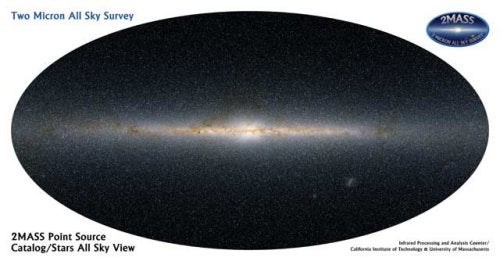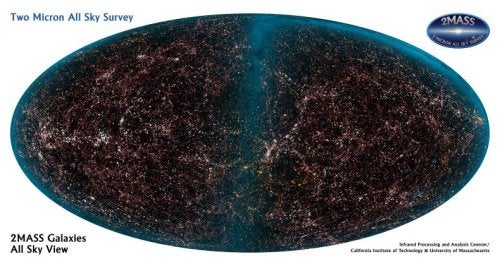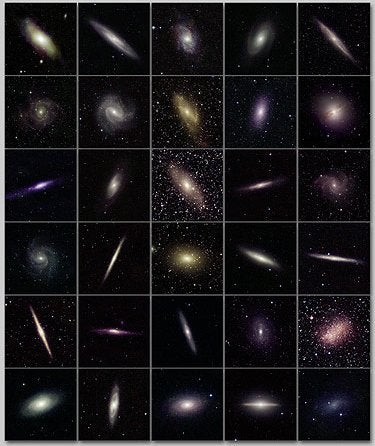The project began surveying the northern sky in June 1997 with the 1.3-meter telescope at Fred Lawrence Whipple Observatory on Mount Hopkins in Arizona. The Southern Hemisphere observations began in March 1998 with the 1.3-meter telescope at the Cerro Tololo Inter-American Observatory in Chile. The last images were collected in February 2001. Since then scientists have been compiling, processing, and validating their data.
The infrared wavelengths of 2MASS penetrate dust better than visible light, bringing one-third more galaxies in the nearby universe into view. Stripping away the dust also allows us a clearer view of our own galaxy. “For the first time in history, we can, in effect, step outside our galaxy and see it in detail, as it would appear from above,” says 2MASS principal investigator Michael Skrutskie of the University of Virginia, Charlottesville.
A panorama of the entire sky, including the Milky Way, shows more than 1.6 million galaxies. More than half of the galaxies in this image have never before been cataloged. The picture allows observers to trace the galactic clusters, superclusters, and streamers that form the large-scale structure of the universe.
Although scientists will mine the data for decades to come, 2MASS has already aided many discoveries. The survey has revealed hundreds of brown dwarfs, galaxies and quasars hidden by dust, and unprecedented details in the Large Magellanic Cloud. The project has also produced the largest database ever of the location, brightness, color, and position of asteroids.
The catalog of images is available on the Internet for scientists and the public alike. Astronomers will be able to access any spot in the sky through their computer instead of having to win precious observing time at a telescope. You can view the endless gallery of galaxies, clusters, nebulae, and more at 2MASS Atlas Image Gallery.












